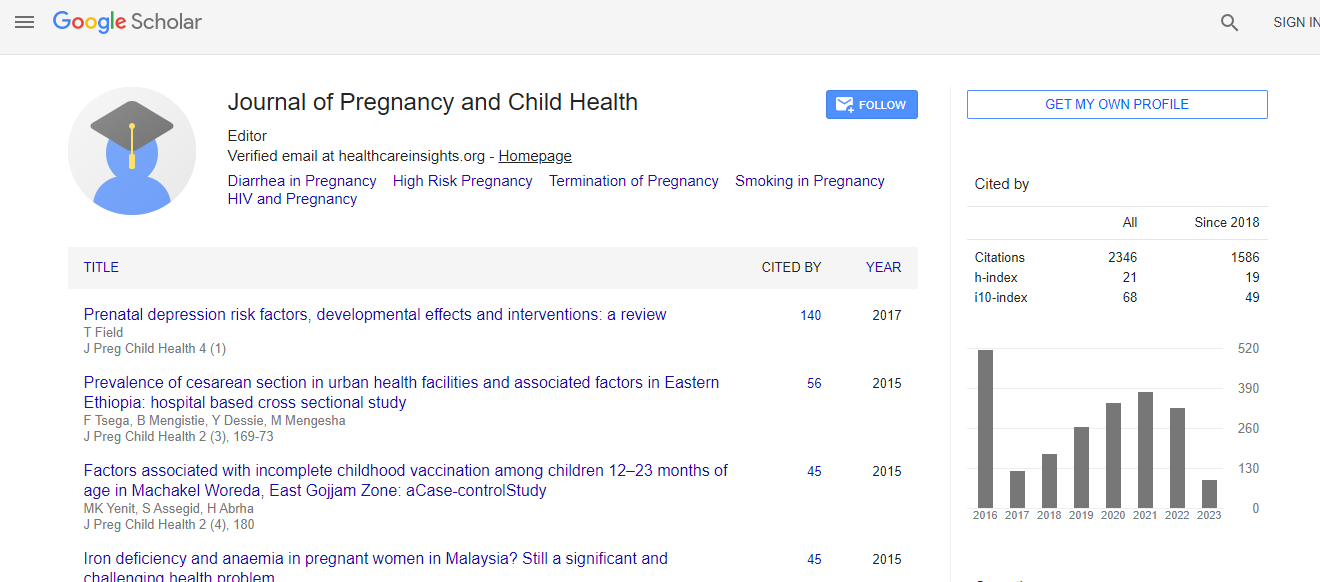Review Article
Prenatal Depression Risk Factors, Developmental Effects and Interventions: A Review
Tiffany Field*University of Miami/Miller School of Medicine, Fielding Graduate University, USA
- *Corresponding Author:
- Tiffany Field
University of Miami/Miller School of Medicine
Fielding Graduate University, USA
Tel: 13059755029
E-mail: tfield@med.miami.edu
Received date: February 08, 2017; Accepted date: February 22, 2017; Published date: February 27, 2017
Citation: Field T (2017) Prenatal Depression Risk Factors, Developmental Effects and Interventions: A Review. J Preg Child Health 4:301. doi:10.4172/2376-127X.1000301
Copyright: © 2017 Field T. This is an open-access article distributed under the terms of the Creative Commons Attribution License, which permits unrestricted use, distribution and reproduction in any medium, provided the original author and source are credited.
Abstract
This narrative review based on a literature search in PubMed and PsycInfo on the two terms prenatal and antenatal depression includes empirical studies, reviews and meta-analyses that have been published during the last 5 years on risk factors, developmental effects and interventions for prenatal depression. Risk factor studies that met criteria feature demographic measures (lower socioeconomic status, less education, non-marital status, nonemployment, less social support and health locus of control, unintended pregnancy, partner violence and history of child abuse) and physiological variables (cortisol, amylase, and pro-inflammatory cytokines and intrauterine artery resistance). The negative effects include postpartum depression, paternal depression, and prematurity and low birth weight. Negative effects on infants include greater right frontal EEG, amygdala connectivity, cortical thinning and more difficult temperament. In childhood, externalizing and internalizing problems have been reported. The data on prenatal antidepressants (specifically SSRIs) reveal negative effects including internalizing problems as well as a greater risk for autism spectrum disorder. Prenatal interventions that have been effective include interpersonal psychotherapy, peer support, massage therapy, yoga, tai chi, and aerobic exercise. Potential underlying mechanisms are discussed as well as methodological limitations including homogeneity of samples and lack of randomization to intervention groups. Despite these limitations, the literature highlights the need for prenatal depression screening and intervention.

 Spanish
Spanish  Chinese
Chinese  Russian
Russian  German
German  French
French  Japanese
Japanese  Portuguese
Portuguese  Hindi
Hindi 
